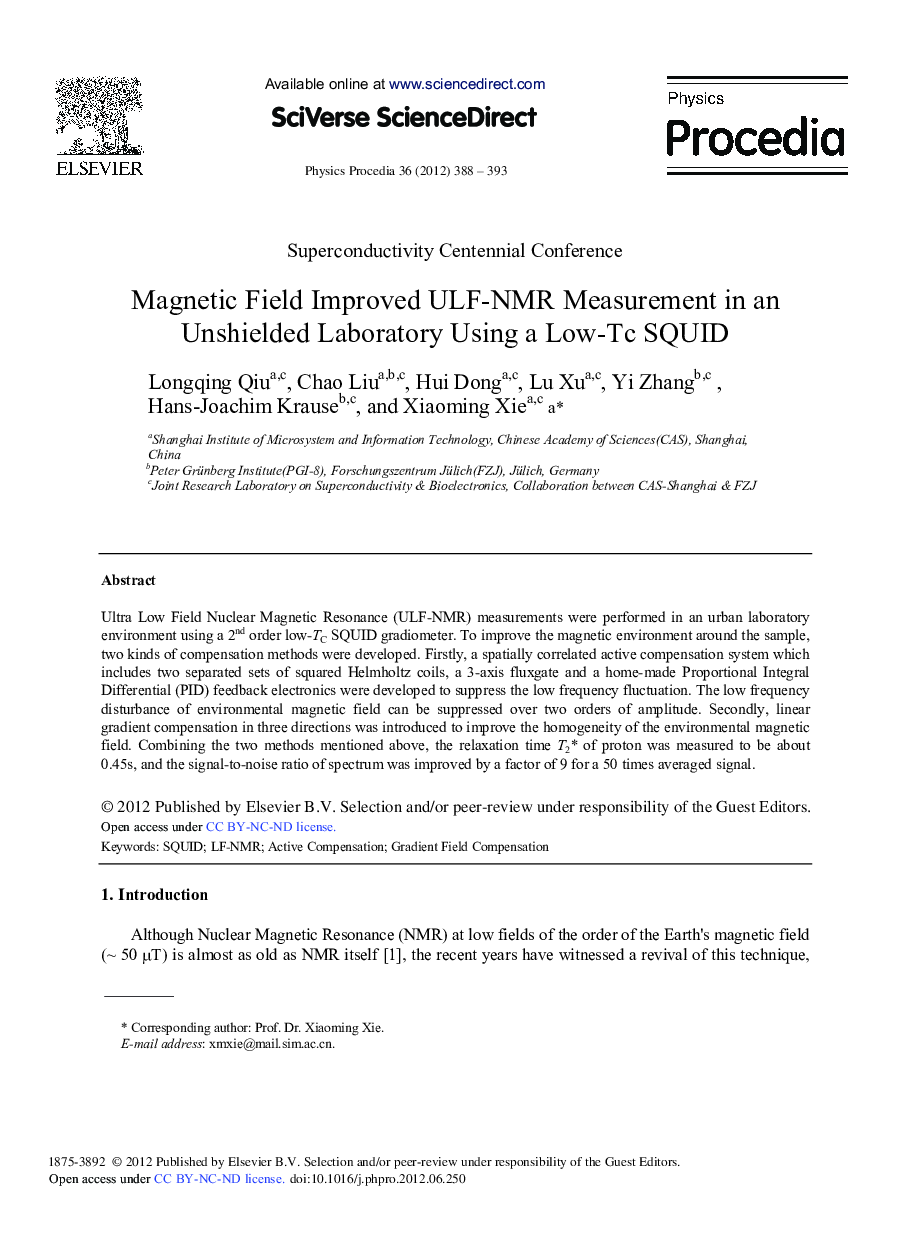| Article ID | Journal | Published Year | Pages | File Type |
|---|---|---|---|---|
| 1874819 | Physics Procedia | 2012 | 6 Pages |
Abstract
Ultra Low Field Nuclear Magnetic Resonance (ULF-NMR) measurements were performed in an urban laboratory environment using a 2nd order low-TC SQUID gradiometer. To improve the magnetic environment around the sample, two kinds of compensation methods were developed. Firstly, a spatially correlated active compensation system which includes two separated sets of squared Helmholtz coils, a 3-axis fluxgate and a home-made Proportional Integral Differential (PID) feedback electronics were developed to suppress the low frequency fluctuation. The low frequency disturbance of environmental magnetic field can be suppressed over two orders of amplitude. Secondly, linear gradient compensation in three directions was introduced to improve the homogeneity of the environmental magnetic field. Combining the two methods mentioned above, the relaxation time T2* of proton was measured to be about 0.45s, and the signal-to-noise ratio of spectrum was improved by a factor of 9 for a 50 times averaged signal.
Keywords
Related Topics
Physical Sciences and Engineering
Physics and Astronomy
Physics and Astronomy (General)
Authors
Longqing Qiu, Chao Liu, Hui Dong, Lu Xu, Yi Zhang, Hans-Joachim Krause, Xiaoming Xie,
